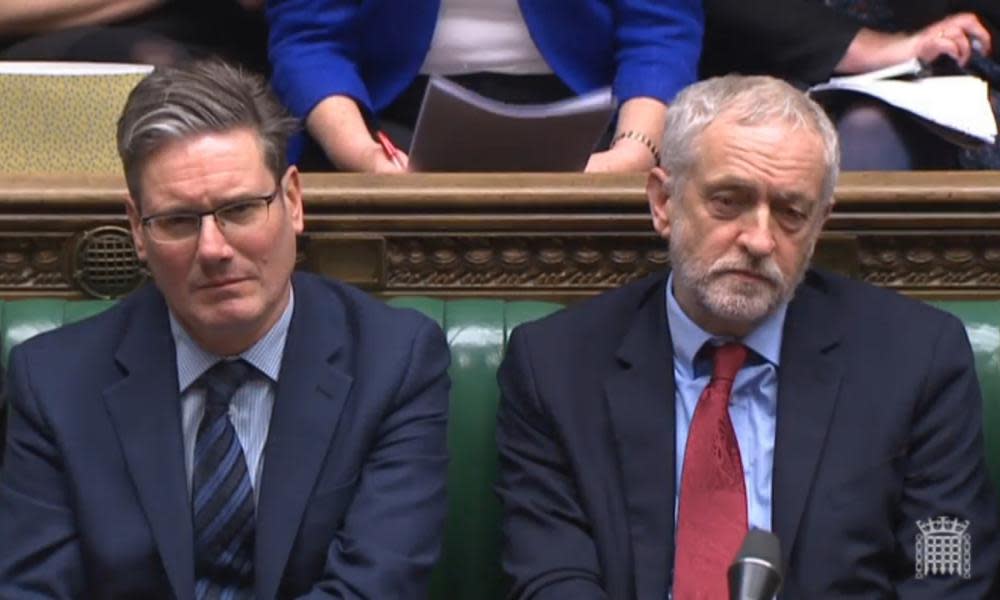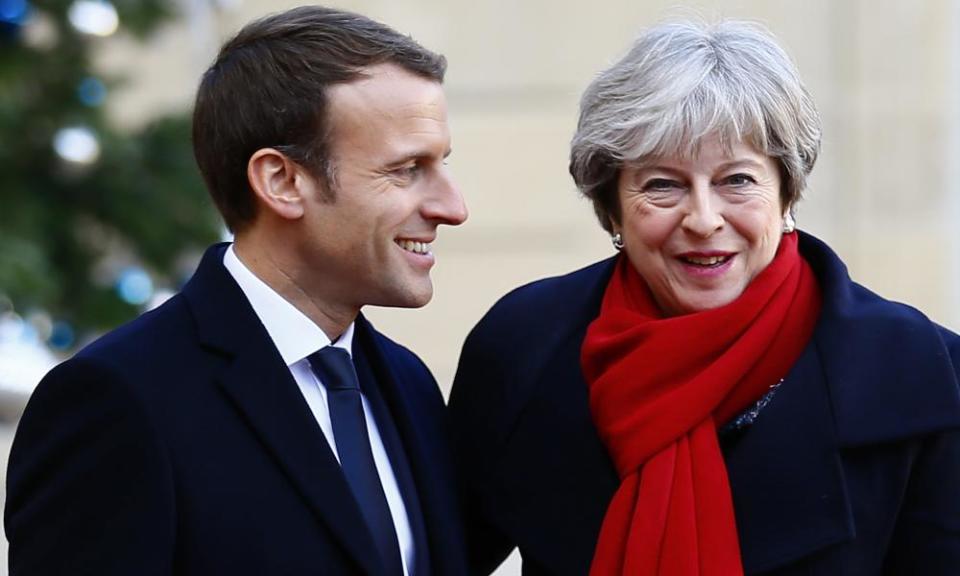Labour isn’t flip-flopping on Brexit – this is practical politics | Maya Goodfellow

For some, Labour can do no right on Brexit. The party has a clear, adaptable position – but in recent days it has, somewhat predictably, been accused of being ambiguous.
The party wants “full participation of the single market” and “the full benefits of the customs union”, as Keir Starmer outlined on Sunday. Within days of the shadow Brexit secretary uttering these words, Jeremy Corbyn has been criticised for not outlining exactly what that deal would look like.
But Labour is not being vague or flip-flopping – its approach has always been necessarily open. It is flexible about whether the benefits of the single market are best kept by striking a new relationship with the single market (which, crucially, isn’t a membership organisation) or through a customised trade deal. And it is adamant all options should be kept on the table when it comes to keeping the benefits of the customs union.
This is practical politics. Unprecedented negotiations and multiple moving pieces, compounded by a flailing government, does not make for a set of circumstances where quick, clear-cut decisions are easy to come by.
Labour has provided sufficient transparency when navigating the murky Brexit waters, into which it might have to plunge should Theresa May’s deeply divided government collapse – which it could at any moment. And while the Conservatives – the people actually in charge of discussions – obstinately remain opaque about what goes on around the negotiating table, it’s Labour that has put together proposals that would avoid the potentially cavernous pitfalls the Tories are papering over.
Labour’s is a strategy that recognises the need for a realistic outcome in Northern Ireland, which the government was starkly ignoring until Friday – and even then fudged. The Tories have given no lucid explanation of how the border would operate without a “soft Brexit”, and though they have made it through the first stage of negotiations, their position could soon crumble as May tries to keep together a party determined to pull the final Brexit deal in opposite directions.

Labour’s stance also recognises the calamitous impact a bad Brexit deal would have on people’s lives, an important detail that seems a mere footnote for the Conservatives.
Where May has been hostile, Corbyn has been open. The prime minister has spent months of precious negotiating time antagonising her EU counterparts. Her promise, along with Michael Gove’s at the weekend, that nothing is decided for definite, is a move intended in part to placate Brexiter backbenchers. But it’s also one that could annoy the European Commission.
Meanwhile, Corbyn has been making trips to Brussels to form relationships with the same negotiators May has little problem in upsetting, in case Brexit responsibilities should fall to him. With a Conservative government obsessed with its own internal feuds, Labour has the only grownups anywhere near the British side of the Brexit talks.
What are Brexit options now? The four scenarios
If the UK has a change of heart, it could sign up to all the EU’s rules and regulations, staying in the EU’s single market and customs union. Freedom of movement would continue and the UK would keep paying into the Brussels pot. We would continue to have unfettered access to EU trade, but the pledge to “take back control” of laws, borders and money would not have been fulfilled. This is an unlikely outcome and one that may be possible only by reversing the Brexit decision, after a second referendum or election.
Britain could follow Norway, which is in the single market, is subject to freedom of movement rules and pays a fee to Brussels – but is outside the customs union. That combination would tie Britain to EU regulations but allow it to sign trade deals of its own. A “Norway-minus” deal is more likely. That would see the UK leave the single market and customs union and end free movement of people. But Britain would align its rules and regulations with Brussels, hoping this would allow a greater degree of market access. The UK would still be subject to EU rules.
A comprehensive trade deal like the one handed to Canada would help British traders, as it would lower or eliminate tariffs. But there would be little on offer for the UK services industry. It is a bad outcome for financial services. Such a deal would leave Britain free to diverge from EU rules and regulations but that in turn would lead to border checks and the rise of other “non-tariff barriers” to trade. It would leave Britain free to forge new trade deals with other nations. Many in Brussels see this as a likely outcome, based on Theresa May’s direction so far.
Britain leaves with no trade deal, meaning that all trade is governed by World Trade Organisation rules. Tariffs would be high, queues at the border long and the Irish border issue severe. In the short term, British aircraft might be unable to fly to some European destinations. The UK would quickly need to establish bilateral agreements to deal with the consquences, but the country would be free to take whatever future direction it wishes. It may need to deregulate to attract international business – a very different future and a lot of disruption.
But the party’s commendable Brexit flexibility doesn’t mean its position is foolproof; any adaptability shouldn’t be predicated on placating xenophobia. “The end of free movement doesn’t mean no movement,” Starmer told Andrew Marr on Sunday. “Of course we would want people to come from the EU to work here, we would want people who are here to go to work in the EU.”
His vision, he agreed, could be described as “easy movement, if not free”. Easy on whose terms? If freedom of movement comes to an end, what exactly would the policy detail on “easy movement” look like: how would it affect migrants’ lives?
We already know non-EU migrants risk exploitation through a visa system that ties them to their employer or spouse. If your boss sponsors you to be in the country, you might be less likely to be able to challenge over pay and conditions for fear of jeopardising your immigration status. Migration controls can cause precarity. An expansion of this system would be a disaster for migrants’ rights; we can’t have a “jobs first” Brexit that exploits migrants at the whim of business. Instead, we need to be working to scale up everyone’s rights.
And though continuing to recognise that migration will not magically stop when Brexit comes to an end is welcome, Labour has to do groundwork to take on anti-immigration sentiment. Deep-seated xenophobia and racism rose to the surface in the wake of the referendum, and it could explode into anti-migrant and racist violence again when immigration doesn’t come to an end.
Leaving the EU was never going to be a straightforward path. The referendum that led the country to this result was crude and misleading; the government’s approach to talks has been boorish, illogical and driven by imperial nostalgia. The Tories seem to think an intricate 44-year-old relationship can be recklessly dismantled in a matter of years. Labour didn’t cause Brexit, is not in charge of it and yet the party has the shrewdest position.

 Yahoo News
Yahoo News 
